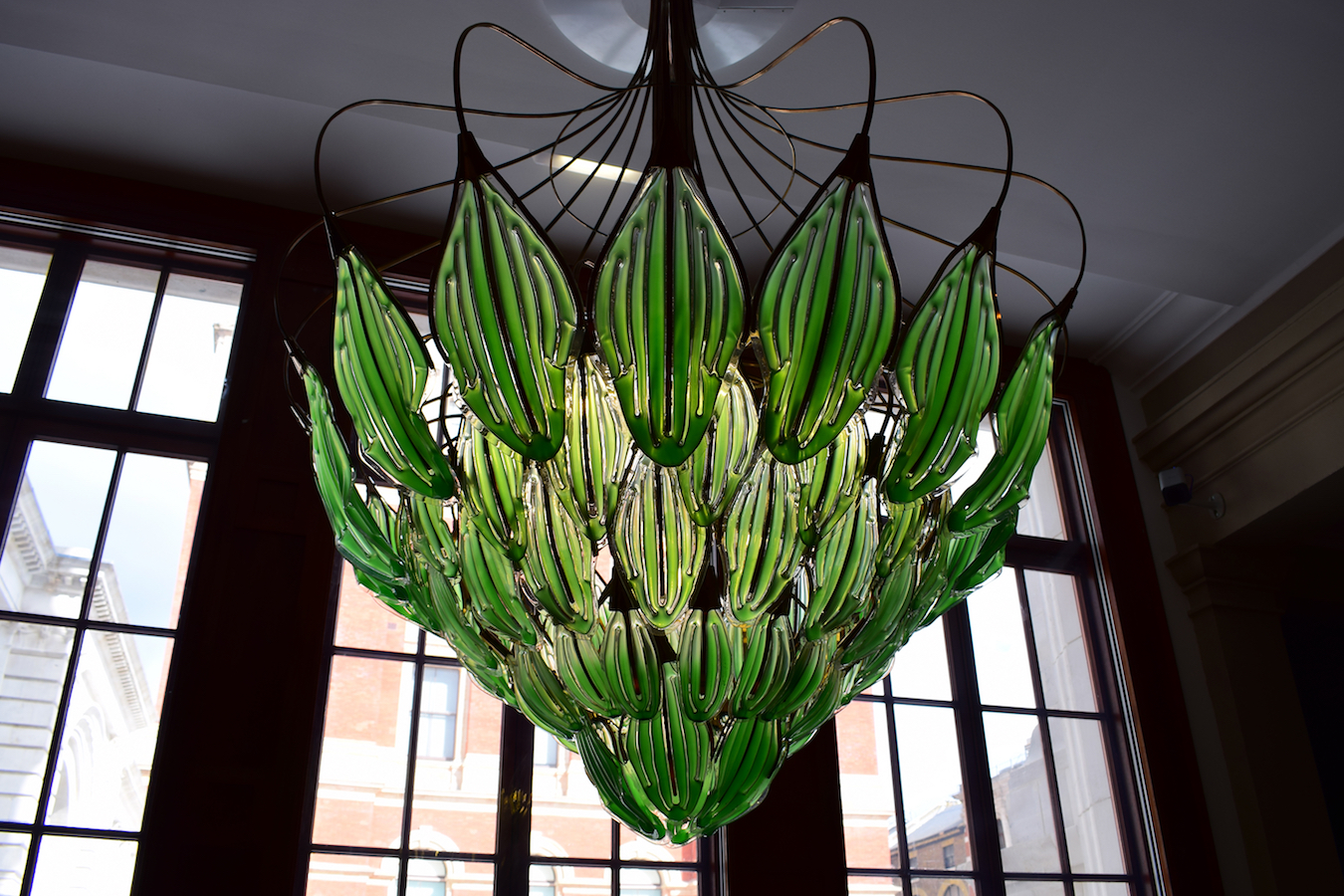Thanks to this fellowship supported by the Clothworkers’ Company I could dedicate half of my weekly time to convert my bionic leaves to work at a smaller scale, a scale that can be appreciated directly and daily by all people and designed around people.
This conversion involved both technical development and aesthetical research which enabled the construction of the first “living and breathing chandelier” using the new BioSolar Leaf as light diffusers. The light emitted by the “living chandelier” not only illuminates the space but also stimulates the BioSolar Leaf photosynthetic ability to enable an automatic indoor air purification performed by living microalgae enclosed into leaf modules. This biological process performed by the chandelier establishes and explores a new symbiotic relationship between object and people where life-giving resources are constantly exchanged, and where each other waste enables respective metabolic processes. This exchange recalls how biospheric systems work, where waste ultimately doesn’t exist but is a valuable resource for other elements in that system.
The fellowship culminated with Exhale being installed at the Victoria and Albert Museum in London who supported a residency for the installation of the chandelier.
Its design took inspiration from nature and the V&A’s Art-Nouveau and Islamic Art collections. Chandeliers have always been a strong symbol of social trends, craft techniques and luxurious aesthetics of a precise historic period. I believe my new work embraces the essence of our generation thanks to the novel technologies, shapes and techniques I used and the benefits it gives.
Exhale is now part of the prestigious V&A permanent collection and can be seen in the museum. The metal structure is entirely hand-made and a burnished. Each structure holds a single leaf module of 3 different sizes that repeats itself seventy times on a radial array; similar to how nature shapes plants and shells. The Bionic Chandelier is connected to a life-support-unit device, developed by Arborea’s engineers, which nourish and maintains the culture of the living microorganisms.
